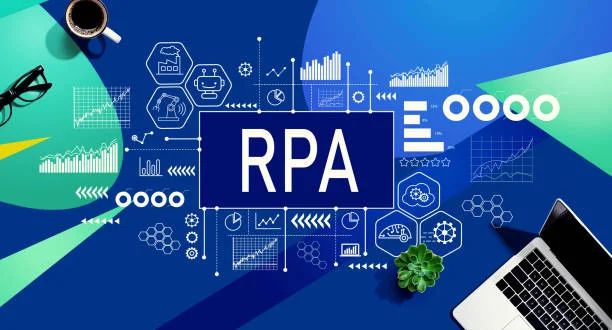Robotic Process Automation has transformed how organizations handle repetitive tasks and streamline business operations across virtually every industry. The success of RPA OR Tools for RPA implementation depends heavily on selecting appropriate automation technologies that align with specific business requirements, existing infrastructure, and operational goals.
Modern tools for RPA have evolved to address diverse business scenarios, from simple data entry tasks to complex multi-system workflows that require integration with legacy applications, cloud platforms, and specialized industry software. Understanding how different industries apply these automation technologies provides valuable insights for organizations considering RPA implementation.
Financial Services Industry Applications
Banking and Credit Processing
Financial institutions leverage tools for RPA to automate loan processing, credit assessments, and regulatory compliance activities. These applications typically involve extracting data from multiple sources, performing calculations, and updating various systems while maintaining audit trails and compliance documentation.
RPA tools in banking often integrate with core banking systems, credit scoring platforms, and regulatory reporting systems to create end-to-end automated workflows. The automation reduces processing time while improving accuracy and consistency in credit decisions and compliance reporting.
Discover top picks and trending insights in our featured post section now.
Insurance Claims Processing
Insurance companies use automation technology to streamline claims intake, processing, and settlement activities. The tools can extract information from claim forms, validate policy coverage, assess damage reports, and initiate payment processes based on predefined business rules.
Advanced RPA implementations in insurance include integration with image recognition technology for damage assessment and natural language processing for analyzing claim descriptions. These capabilities enable more sophisticated automation that can handle complex claims scenarios.
Investment and Wealth Management
Investment firms implement tools for RPA to automate portfolio management tasks, regulatory reporting, and client communication processes. The automation can gather market data, execute trades based on predefined strategies, and generate client reports automatically.
The integration with financial data providers and trading platforms enables real-time automation that can respond to market conditions while maintaining compliance with investment regulations and client preferences.
Healthcare Industry Implementations
Patient Registration and Scheduling
Healthcare organizations use RPA tools to automate patient registration, appointment scheduling, and insurance verification processes. These applications reduce administrative burden on staff while improving patient experience through faster processing and fewer errors.
The automation can integrate with electronic health record (EHR) systems, insurance databases, and scheduling platforms to create seamless patient onboarding workflows. This integration ensures data accuracy while reducing manual data entry requirements.
Claims and Billing Automation
Healthcare providers leverage automation technology to streamline medical billing, claims submission, and payment processing activities. An effective rpa tool in healthcare can extract billing information from various systems, validate insurance coverage, and submit claims automatically.
The automation includes error checking and exception handling capabilities that identify potential issues before claims submission, reducing rejection rates and accelerating payment cycles. This automation significantly reduces the administrative costs associated with revenue cycle management.
Regulatory Compliance and Reporting
Healthcare organizations face extensive regulatory requirements that benefit from automated compliance monitoring and reporting. RPA tools can gather required data from multiple systems, generate compliance reports, and submit regulatory filings automatically.
The automation ensures consistent data collection and reporting while maintaining audit trails that support compliance verification activities. This capability is particularly valuable for organizations that must comply with multiple regulatory frameworks simultaneously.
Manufacturing Industry Applications
Supply Chain and Inventory Management
Manufacturing companies implement tools for RPA to automate supply chain coordination, inventory tracking, and procurement processes. The automation can monitor inventory levels, generate purchase orders, and coordinate with suppliers based on production schedules and demand forecasts.
Integration with enterprise resource planning (ERP) systems, supplier portals, and logistics platforms enables comprehensive supply chain automation that reduces costs while improving delivery performance and inventory optimization.
Quality Control and Compliance Monitoring
Manufacturing organizations use automation technology to streamline quality control processes, regulatory compliance activities, and documentation management. RPA tools can collect quality data from various sources, perform compliance checks, and generate required documentation automatically.
The automation includes integration with quality management systems, testing equipment, and regulatory databases to ensure consistent compliance monitoring and reporting. This capability helps manufacturers maintain quality standards while reducing compliance-related administrative burden.
Production Planning and Scheduling
Advanced RPA implementations in manufacturing include production planning and scheduling automation that coordinates resources, materials, and capacity based on demand forecasts and operational constraints. These applications optimize production efficiency while maintaining delivery commitments.
The automation integrates with manufacturing execution systems (MES), ERP platforms, and customer order management systems to create responsive production planning capabilities that adapt to changing demand patterns and resource availability.
Retail and E-commerce Sector Uses
Order Processing and Fulfillment
Retail organizations leverage RPA automation tools to automate order processing, inventory allocation, and shipping coordination activities. The automation can process orders from multiple channels, check inventory availability, and coordinate with fulfillment centers automatically.
Integration with e-commerce platforms, inventory management systems, and logistics providers enables end-to-end order fulfillment automation that improves customer satisfaction while reducing operational costs and processing errors.
Price Management and Competitive Analysis
Retailers use automation technology to monitor competitor pricing, update product prices, and manage promotional activities across multiple channels. RPA tools can gather pricing data from various sources, analyze competitive positioning, and implement pricing changes automatically.
The automation includes business rule engines that ensure pricing changes align with profit margin requirements, promotional strategies, and competitive positioning objectives. This capability enables dynamic pricing strategies that respond to market conditions quickly.
Customer Service and Support
Retail companies implement tools for RPA to automate customer service processes, including order inquiries, return processing, and account updates. The automation can access customer data from multiple systems, process routine requests, and escalate complex issues to human agents.
Integration with customer relationship management (CRM) systems, order management platforms, and communication channels enables comprehensive customer service automation that improves response times while maintaining service quality.
Technology Implementation Considerations
Platform Selection and Evaluation Criteria
Selecting appropriate tools for RPA requires careful evaluation of platform capabilities, integration options, scalability features, and total cost of ownership. Organizations should consider both current automation needs and future expansion plans when evaluating different platforms.
The evaluation process should include proof-of-concept implementations that test platform capabilities with actual business processes and data. This hands-on evaluation provides insights into platform suitability and implementation complexity that theoretical assessments cannot provide.
Integration and Infrastructure Requirements
Successful RPA implementation requires careful consideration of integration requirements with existing systems, security protocols, and infrastructure capacity. The chosen RPA tool must integrate effectively with current business applications while maintaining security and performance standards.
The following factors should be considered during RPA tool selection and implementation:
- Compatibility with existing operating systems and application environments
- Integration capabilities with databases, web services, and legacy applications
- Security features, including encryption, access controls, and audit logging
- Scalability options for handling increased automation volumes
- Monitoring and management capabilities for operational oversight
- Vendor support and community resources for troubleshooting and optimization
Change Management and User Adoption
Implementing RPA tools requires comprehensive change management strategies that address employee concerns, provide adequate training, and establish clear communication about automation benefits and impacts. Successful adoption depends on demonstrating value while addressing workforce concerns about job displacement.
The change management approach should include user training programs, clear communication about automation objectives, and ongoing support that helps employees adapt to new workflows and responsibilities created by automation implementation.
Measuring Success and ROI
Performance Metrics and KPIs
Measuring the success of RPA implementations requires tracking relevant key performance indicators, including process completion times, error rates, cost savings, and user satisfaction scores. These metrics provide insights into automation effectiveness and identify opportunities for optimization.
Organizations should establish baseline measurements before automation implementation to enable accurate assessment of the improvement achieved through RPA tools. Regular performance monitoring helps identify issues and optimization opportunities that maintain automation effectiveness over time.
Cost-Benefit Analysis and Business Case Development
Developing comprehensive business cases for RPA investments requires careful analysis of implementation costs, ongoing operational expenses, and expected benefits, including labor savings, error reduction, and improved processing capacity.
The analysis should consider both direct benefits, like reduced processing time, and indirect benefits, like improved employee satisfaction and enhanced customer experience. These comprehensive assessments provide complete pictures of automation value that support investment decisions and ongoing optimization efforts.
Conclusion
The diverse applications of tools for RPA across different industries demonstrate the versatility and value of automation technology in addressing various business challenges and operational requirements. From financial services to healthcare, manufacturing to retail, organizations are finding innovative ways to leverage RPA tools for improving efficiency and reducing costs.
Success with RPA implementation depends on selecting appropriate tools that align with specific industry requirements, existing infrastructure, and business objectives. Organizations that take systematic approaches to tool selection, implementation planning, and change management typically achieve better outcomes while avoiding common pitfalls.
Spotlight stories you can’t miss—read our featured post on Management Works Media today.






